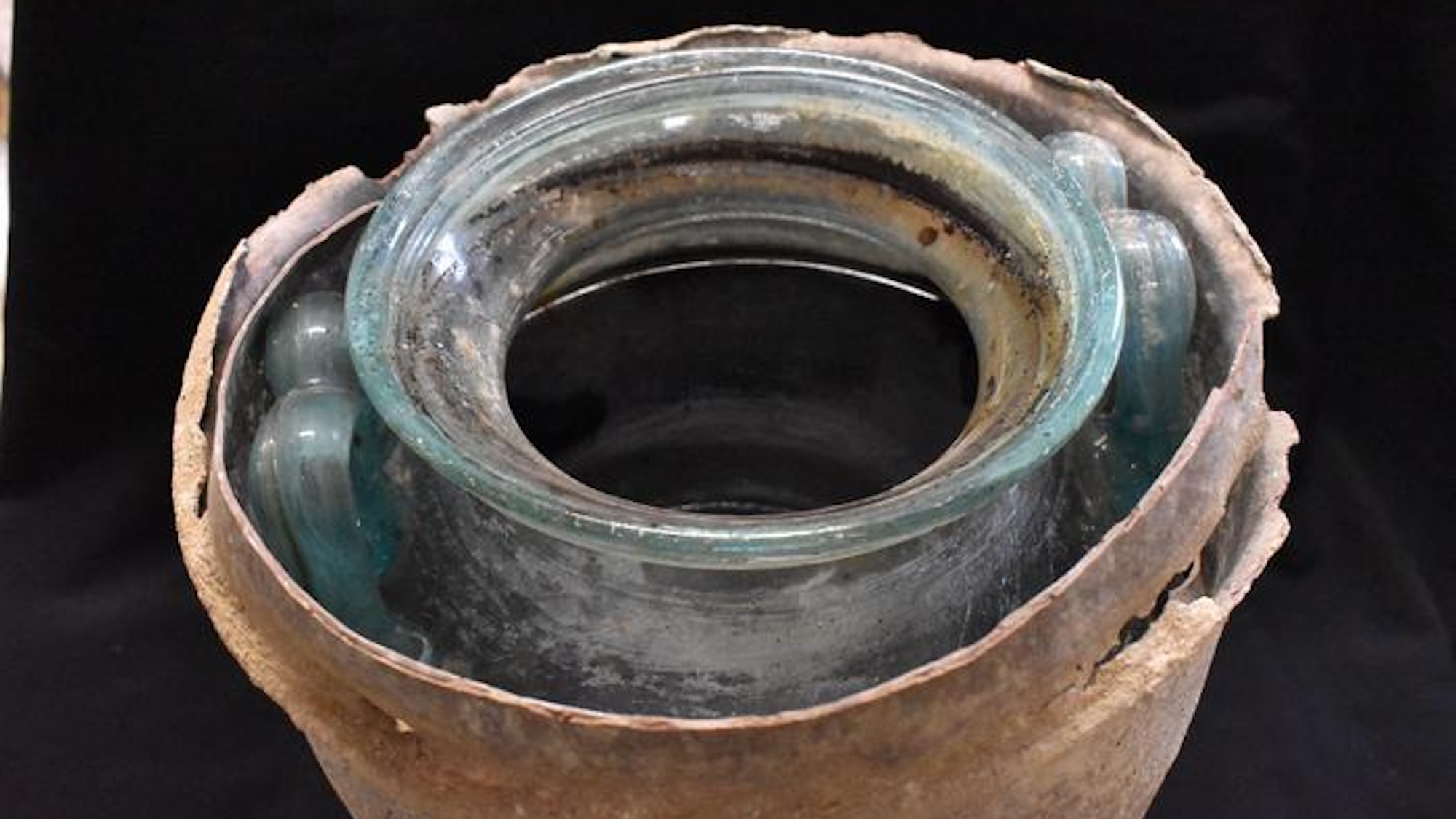

Although wine dates back to the earliest human societies, actual samples from ancient cultures are rare to find. Thanks to a well-preserved tomb and a little luck, however, a team of archeologists and chemists from Spain’s University of Cordoba recently announced what they believe to be the oldest known wine ever discovered. At over 2,000-years-old, the vintage libation also contains a macabre additive—the skeletal remains of a Roman aristocrat.
Back in 2019, archeologists uncovered two glass funerary urns while excavating a six-person tomb from the first century CE near Carmona, Italy. Inside one of them, the cremated bones of a man named Senicio were immersed in a red-tinged liquid that researchers believed was wine.
[Related: Ancient, surprisingly well-preserved purple dye uncovered in Greece.]
Interring bones inside an urn with wine was a popular burial ritual among the Roman elite, but the custom was largely reserved for men due to societal prohibitions on women drinking alcohol. Just how rigidly women upheld this standard is likely up for debate, but when it came to a final resting place, Roman men were solely those receiving a boozy trip to the afterlife. Women—such as Hispana, who occupied the tomb’s other glass urn—were traditionally accompanied by jewels, perfumes, and fabrics like silk.
According to their paper published in Journal of Archeological Science Reports, the fact that any liquid remained inside the urn for over 2,000 years initially surprised researchers. But because the mausoleum remained fully intact and sealed for millennia, conditions barred the chance for evaporation, leaks, exposure to the elements, or even graverobbing. That said, it was possible the wine turned to vinegar long ago—if that were the case, the title of “oldest wine ever recovered” would still belong to a fourth century CE bottle currently stored in Germany’s Historical Museum of Pfalz.
With a taste test out of the question, the team conducted multiple analyses to determine traits like the liquid’s pH level and chemical composition. Researchers also focused on a set of compounds present in all wine known as polyphenols. Using a technique called high-performance liquid chromatography-mass spectrometry, the team identified extremely low amounts of seven polyphenols also present in the surrounding region’s Montilla-Moriles, Jerez, and Sanlúcar wines.
Organic chemists noted that the lack of one polyphenol called syringic acid, as well as with the liquid’s mineral salt composition, indicate Senicio’s remains were soaked in white wine. While some degradation over time was inevitable, the team are still confident the wine is now officially the oldest ever found in its original liquid state. And if anything deserves a toast it’s a new archeological world record.